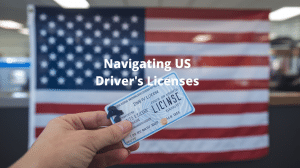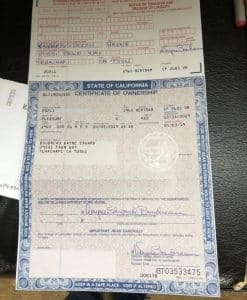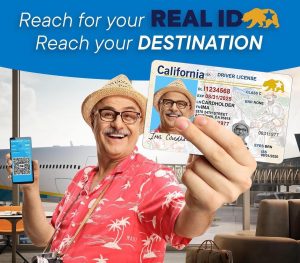Are you ready for the 2025 hack on how to get a drivers license in Texas at 16? 🚗 Getting your driver’s license in the Lone Star State might seem like a daunting task, but it doesn’t have to be. Whether you’re a first-time driver or new to Texas, navigating the process can be as smooth as a drive down a country road – if you know what to expect. Order a scannable driver’s license from INSIDERS directly and fast Now
From checking your online eligibility to understanding application requirements, we’ve got you covered. In this guide, we’ll steer you through the six key steps to obtaining your Texas driver’s license. We’ll explore everything from initial applications to renewals, and even touch on eligibility reinstatement and license upgrades. So buckle up and get ready to embark on your journey to becoming a licensed Texas driver!
Step-by-Step Guide on how to get a drivers license in Texas at 16
Online Eligibility for Texas DL/ID Services
Determining Your Eligibility
To determine if you’re eligible for online DL/ID services in Texas at 16, consider the following factors:
-
Age and residency status
-
Type of service needed
-
Current license status
-
Last renewal method
Services Available Online
Here’s a list of services you may be able to complete online:
-
Driver’s license renewal
-
ID card renewal
-
Address change
-
Driver record requests
-
Replacement of lost or stolen license/ID
Eligibility Criteria
| Criteria | Eligible | Not Eligible |
|---|---|---|
| Age | 18-78 years old | Under 18 or over 78 |
| Citizenship | U.S. citizen or legal resident | Non-U.S. citizen without legal residency |
| Last Renewal | In-person at DPS office | Online or by mail |
| License Status | Valid and not expired | Expired for more than 2 years |
| Medical Conditions | No new medical conditions | New medical conditions since last renewal |
Steps to Check Eligibility
-
Visit the official Texas Department of Public Safety website
-
Navigate to the “Driver License” section
-
Select “Online Services”
-
Choose the service you need
-
Answer the eligibility questions provided
If you meet all the criteria, you’ll be able to proceed with the online service. If not, you’ll need to visit a DPS office in person. Remember, even if you’re eligible for online services, you may still choose to visit a DPS office if you prefer face-to-face assistance or have specific questions about your application.
Texas driver license applications
Types of Texas Driver’s License Applications
When applying for a Texas driver’s license, it’s important to understand the different types of applications available. The Texas Department of Public Safety (DPS) offers several options to suit various needs and circumstances.
Standard Driver’s License
The standard driver’s license is the most common type for Texas residents. It allows you to operate non-commercial vehicles and is valid for six years.
Commercial Driver’s License (CDL)
For those looking to drive commercial vehicles, a CDL is required. This license has additional requirements and testing compared to a standard license.
Learner’s Permit
New drivers typically start with a learner’s permit, which allows supervised driving practice before obtaining a full license.
Provisional License
Drivers between 16 and 18 years old receive a provisional license with certain restrictions.
Here’s a comparison of the different license types:
| License Type | Age Requirement | Validity | Key Features |
|---|---|---|---|
| Standard | 18+ | 6 years | Non-commercial use |
| CDL | 18+ (21+ for interstate) | 6 years | Commercial vehicle operation |
| Learner’s Permit | 15+ | 6 years | Supervised driving only |
| Provisional | 16-18 | Until 18th birthday | Restricted driving hours |
Application Process
To apply for a Texas driver’s license, follow these steps:
-
Complete a driver’s education course (if under 25)
-
Gather required documents (proof of identity, residency, and SSN)
-
Pass the written knowledge test
-
Pass the vision test
-
Complete the Impact Texas Driver (ITD) program
-
Pass the driving test
-
Pay the applicable fees
Now that you understand the types of licenses and the application process, let’s explore the specific requirements for obtaining a driver’s license in Texas.
Driver license and ID application requirements

Necessary Documents
To obtain a driver’s license in Texas, you’ll need to provide several important documents. Here’s a list of the essential items:
-
Proof of identity (e.g., birth certificate, passport)
-
Social Security card or proof of Social Security Number
-
Proof of Texas residency (e.g., utility bill, lease agreement)
-
Proof of U.S. citizenship or lawful presence
-
Completion certificate from a Texas driver education course (for new drivers)
Application Process
The application process for a Texas driver’s license involves several steps:
-
Complete the application form (DL-14A)
-
Provide required documents
-
Pass a vision test
-
Take and pass a written knowledge test
-
Schedule and pass a driving test
-
Pay the required fees
Fees and Payment Options
The cost of obtaining a Texas driver’s license varies depending on age and license type. Here’s a breakdown of common fees:
| License Type | Age Group | Fee |
|---|---|---|
| Class C | 18-84 | $33 |
| Class C | 85+ | $9 |
| Motorcycle | All ages | $16 |
Payment can be made by credit card, debit card, cash, or check at most Texas Department of Public Safety (DPS) offices.
Special Requirements for New Drivers
New drivers in Texas must complete additional steps:
-
Attend a state-approved driver education course
-
Complete 30 hours of behind-the-wheel practice
-
Hold a learner’s permit for at least six months before applying for a full license
With these requirements in mind, let’s explore the renewal and replacement processes for Texas driver licenses and IDs.
Driver license and ID, renewals, replacements
Online Renewal Process
Renewing your Texas driver’s license online is a convenient option for many residents. To be eligible for online renewal, you must meet certain criteria:
-
Your current license is not expired for more than two years
-
You’re between 18 and 78 years old
-
Your license is not a commercial driver’s license (CDL)
-
You don’t have any outstanding traffic tickets or warrants
If you meet these requirements, you can renew your license through the Texas DPS Online Services portal.
In-Person Renewal and Replacement
For those who aren’t eligible for online renewal or need a replacement, in-person visits to a Texas DPS office are necessary. Here’s what you’ll need:
-
Proof of identity (e.g., birth certificate, passport)
-
Social Security Number
-
Proof of Texas residency
-
Completed driver’s license application form
| Document Type | Examples |
|---|---|
| Identity Proof | U.S. Passport, Birth Certificate |
| Residency Proof | Utility bill, Lease agreement |
| SSN Proof | Social Security card, W-2 form |
Fees and Payment Methods
The fees for renewal and replacement vary:
-
Standard renewal: $33
-
Replacement license: $11
-
Motorcycle endorsement: Additional $8
Texas DPS accepts various payment methods:
-
Credit/debit cards
-
Cash (in-person only)
-
Personal checks
-
Money orders
Remember to check the Texas DPS website for the most up-to-date fee information and accepted payment methods.
Driving eligibility and reinstatement fees
Driving Eligibility
To maintain driving eligibility in Texas, you must follow specific rules and regulations. Here’s a breakdown of key factors:
-
Age requirements:
-
15 years old: Eligible for learner’s permit
-
16 years old: Eligible for provisional license
-
18 years old: Eligible for full license
-
-
Driving record:
-
Maintain a clean driving record
-
Avoid accumulating too many points on your license
-
-
Medical conditions:
-
Report any medical conditions that may affect driving ability
-
Undergo periodic medical evaluations if required
-
Reinstatement Fees
If your license has been suspended or revoked, you’ll need to pay reinstatement fees. Here’s a table of common reinstatement fees in Texas:
| Violation Type | Reinstatement Fee |
|---|---|
| DWI | $125 |
| No Insurance | $100 |
| Traffic Violation | $100 |
| Administrative | $100 |
To reinstate your license:
-
Check your eligibility online through the Texas DPS website
-
Pay all outstanding fines and fees
-
Complete any required courses or programs
-
Provide proof of insurance (SR-22 if applicable)
-
Visit a DPS office to finalize the reinstatement process
Remember, maintaining a clean driving record is crucial for avoiding suspension and costly reinstatement fees. Always drive responsibly and follow traffic laws to keep your Texas driver’s license in good standing.
Obtaining a driver’s license in Texas involves several key steps and requirements. From checking your online eligibility to understanding application processes and fees, it’s crucial to be well-informed before beginning the process. Whether you’re applying for a new license, renewing an existing one, or seeking reinstatement, the Texas Department of Public Safety provides comprehensive resources to guide you through each stage.
Remember, driving is both a privilege and a responsibility. By following the proper procedures and staying informed about Texas driving laws, you’ll be well-prepared to hit the road safely and legally. Take the time to review all requirements, gather necessary documents, and complete each step carefully to ensure a smooth journey towards obtaining your Texas driver’s license.
FAQs
Q: How do you get a Texas driver’s license?
A: You are required to demonstrate proof of identity, residency and citizenship or lawful status, pass a vision test and complete an application or directly from Insiderseyes if you don’t have the full required necessary documents.
Q: What type of documents do I need to apply for a Texas driver’s license?
A: You’ll typically need:
- Document to prove identity (certificate of birth, passport, etc.)
- Proof of Social Security number
- Proof of Texas residency
- Evidence of citizenship or authorized presence
Q: Do I have to take driver’s education?
A: No, if you’re under 25, you’ll need to take a state-approved driver’s education course.
Q: How do I get the written test?
A. You should study for the test with the Texas Driver’s Handbook, make an appointment at the DPS office, and pass the test.
Q: How do I make an appointment for a driving test?
A: You can schedule your driving test online or by phone at the Texas DPS website or call center.
Q: What if I fail the driving test?
A: You can take the test again after a period of time that will depend on the type of license and number you are applying for.
Q: What is the length of a Texas driver’s license?
A: Driver’s licenses usually last 6-8 years from the date they’re issued – depending on the age and type of license you have.
Q: Can I renew my Texas driver’s license through the web?
Q: Can I renew my license online?
A: Yes, ORDER NOW






